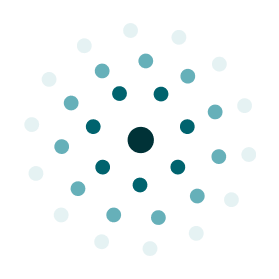Hiring is undergoing its biggest transformation in decades driven by AI in recruiting. What began as a wave of experiments is now becoming standard practice: according to SHRM, AI use across HR tasks climbed to 43% in 2025, up from just 26% in 2024. The shift is clear companies are moving from pilot programs to production-level recruiting workflows powered by Strategic AI.
Let’s explore what AI in recruiting really means, how it works, and why it’s reshaping how hiring teams find, evaluate, and engage talent.
1. What Is AI in Recruiting?
AI in recruiting refers to the use of artificial intelligence particularly machine learning (ML), natural language processing (NLP), and predictive analytics to automate and enhance hiring tasks.
These tools help recruiters:
- Source qualified candidates faster,
- Screen resumes at scale,
- Engage applicants through chat or video, and
- Generate insights for better hiring decisions.
Instead of replacing human recruiters, AI in recruiting acts as a strategic co-pilot, taking over repetitive work while humans focus on high-value tasks like interviewing, relationship-building, and culture alignment.
2. Why AI in Recruiting Is Gaining Ground
Hiring teams today face growing pressure to fill roles faster, reduce bias, and meet new compliance standards all while keeping candidate experience human and transparent.
Here’s why AI adoption is accelerating:
- Speed and Efficiency: AI tools cut time-to-hire by up to 60% by automating early stages like sourcing, matching, and prescreening.
- Quality of Hire: According to LinkedIn, companies using AI-assisted recruiter messaging are 9% more likely to make a quality hire than low users of the feature.
- Compliance and Governance: The EU AI Act, effective August 2025, has raised expectations for employers and vendors to meet transparency and audit requirements in hiring tech.
- Bias Audits: Local regulations, such as New York City’s Local Law 144, still require annual bias audits and candidate notices before using automated employment decision tools.
- Candidate Trust: Only 26% of applicants trust AI to evaluate them fairly (Gartner), which makes visible human oversight and transparency a competitive advantage.
In short: adopting AI in recruiting isn’t just about speed — it’s about fairness, trust, and compliance.
3. How AI in Recruiting Works
AI transforms every stage of the recruiting funnel. Here’s how:
a. Sourcing
AI scans millions of profiles, job boards, and internal databases to identify qualified candidates. Strategic AI models don’t just match keywords they learn from previous hires, cultural indicators, and outcomes to surface high-fit candidates recruiters might otherwise miss.
b. Matching and Ranking
Algorithms evaluate candidates on skills, experience, and performance predictors to generate ranked shortlists. This ensures recruiters spend their time on the most relevant talent.
c. Prescreening
Conversational AI bots engage applicants, collect responses, and qualify them automatically. These interactions mimic a recruiter’s tone and judgment, improving response rates.
d. Interviewing
AI interview tools now analyze not just what candidates say but how they say it. MIT Sloan reports recruiters are adapting interviews to account for candidates using generative AI, placing greater emphasis on structured questioning and calibration.
e. Insights and Automation
AI systems learn from every hire continuously improving job descriptions, sourcing accuracy, and even interview questions. Scheduling, reminders, and ATS updates happen automatically.
When orchestrated together, these systems create a closed hiring loop that gets faster and smarter with every cycle.
4. Real-World Impact: Beyond Automation
Modern AI in recruiting doesn’t stop at automating tasks — it enhances outcomes.
- AI-assisted outreach improves candidate engagement and conversion rates.
- Algorithmic resume assistance helps jobseekers too: the NBER found candidates using AI-based resume tools were 8% more likely to be hired.
- Predictive analytics help recruiters forecast candidate success and retention.
- Smart scheduling and chatbots enhance candidate experience, cutting waiting time and no-shows.
Even fairness and transparency have become business differentiators. The OECD notes that three in five workers worry about losing jobs to AI, which means open communication about AI use in hiring builds trust and employer reputation.
5. The New Era: Strategic AI in Production
2025 marks the year when Strategic AI moved from pilot to production in recruiting. We’re now seeing agentic systems — AI “agents” that can plan, coordinate, and execute recruiting workflows autonomously while keeping humans in the loop.
At Senseloaf, for example:
- FitFinder identifies high-fit candidates instantly.
- HelloHire conducts structured prescreening conversations.
- DeepTalk leads AI-assisted interviews with built-in consistency and analytics. Together, these agents collaborate under one ecosystem — adapting continuously through recruiter feedback and compliance guidelines.
This is AI in recruiting 2.0 — strategic, compliant, and human-centered.
6. Challenges: The Trust and Transparency Gap
Even with its rapid rise, challenges remain:
- Trust: Only a quarter of candidates fully trust AI-led hiring.
- Compliance Pressure: EU and U.S. laws now expect clear disclosures and bias testing.
- Workforce AI Fluency: According to Pew Research, 1 in 5 U.S. workers now use AI on the job, raising expectations for recruiters to mirror that fluency.
7. The Road Ahead
AI in recruiting is evolving from an automation tool to a strategic talent engine. The future lies in balancing algorithmic precision with human empathy combining data, design, and accountability to create fairer, faster, and more transparent hiring systems. Whether you’re a talent acquisition leader or an HR innovator, 2025 is the year to move beyond experimentation and into Strategic AI at scale.
AI is no longer just an assistant. It’s a collaborator. Done right, it can elevate both recruiter and candidate experiences not replace them.
See how Agentic AI is redefining hiring efficiency.

.jpg)





